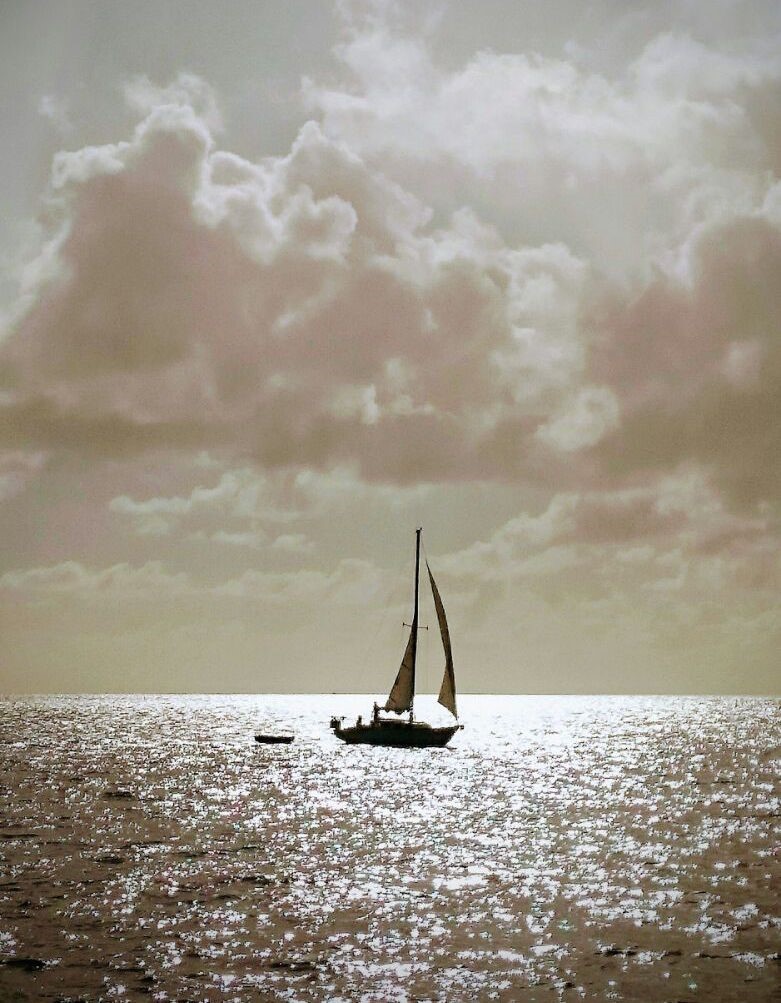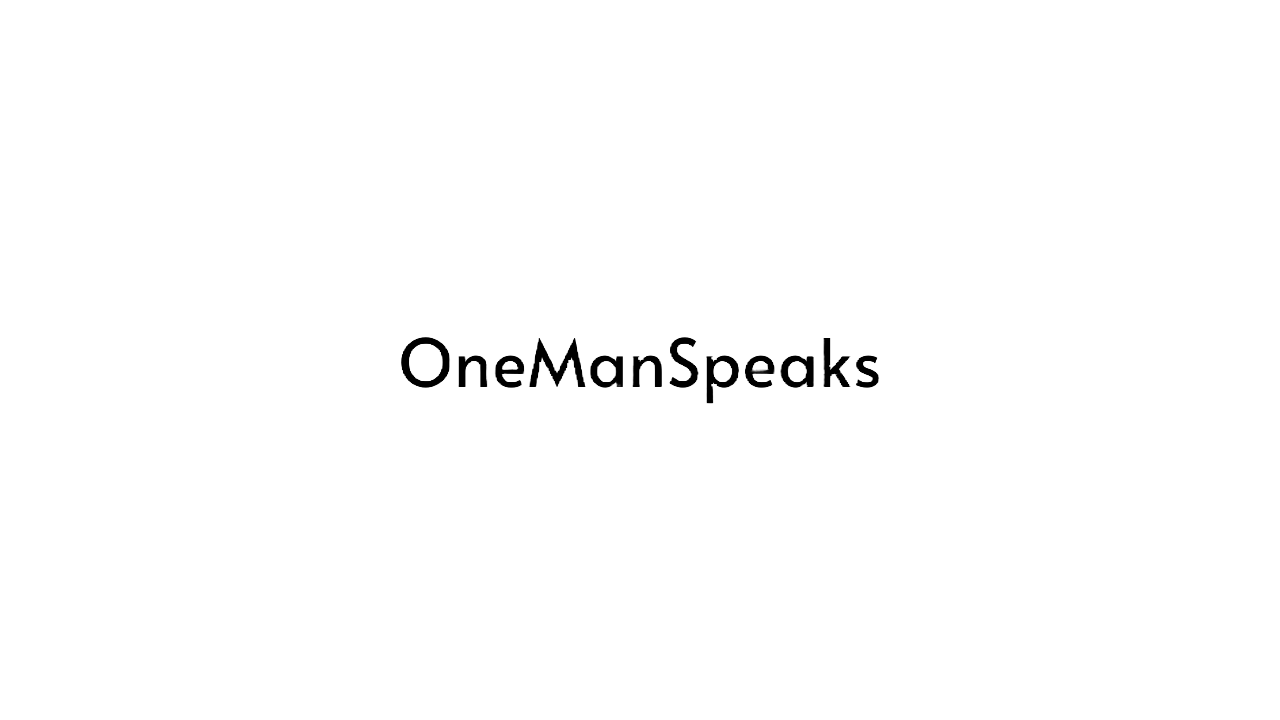
We are sailing close hauled in a channel between some Grenadine islands in about fifteen knots of wind, one reef, small jib, just right for this boat, lee rail well clear of the water (mostly). Sarah is at the helm of Cigana, a borrowed Bristol 27 that she has been sailing for a month or so. She has quite a bit of sailing experience as crew. This is her first command. I am giving her a lesson in some of my sailing tricks. My yacht is a Bristol 24, little sister to the Bristol 27. Both are sloops, mine’s a ’67, hers a ‘68. So I fairly well know how her boat behaves.
“What will happen if you just let go?” I ask.
So we see. Cigana rounds up, tacks through the wind, and, with the jib still sheeted close, now backed, she heaves to on about a beam reach. Understand, she’s not exactly hove to, the mainsail’s still driving some and we haven’t tied the tiller down. But Cigana has essentially parked herself. (Not all sailboats behave this way.) Then we let the mainsail out so she will turn off of the wind, jibe her, sheet in the main, and continue on course close hauled. We haven’t touched the jib sheets.
That’s a good trick for a sailor not having a helmsman or self-steering when she needs to take care of something on deck or duck below. But it is also the basis of my favorite escape tactic. If, instead of letting the boat choose her own pace, I urge her quickly through the tack the instant that I feel her touch the bottom when running aground, if I get her through the wind before she stops, both the mainsail and the jib will be heeling the boat away from the shoal (also reducing her draft) and trying to push her back in the direction from which she came, towards deeper water. Taken a step farther but a step earlier (before running aground), tack and back then, letting out the mainsail to continue the fast turn, sail out the way you came… or any other route you choose. For a reverse course on the new tack, sheet the jib across. Or leave it as it is and jibe to the other tack. The jib is set for a close reach after the jibe, but choose any point of sail you like or need – we’ll get good enough speed by just sheeting the main, we’re maneuvering, not racing. I’m speaking about my boat – I don’t know about yours. My boat can quickly get out of surprisingly close quarters when, say, beating up a channel through shoals that turn out to be a cul-de-sac. Or in close-quarters traffic situations. And there are boats that do it a lot faster than mine… and boats that do it a lot slower.
A final embellishment of this trick is a maneuver I used during Bequia Easter Regatta two decades ago. There was a mark in the middle of Admiralty Bay used by both the yacht races and the local boat races. The yachts used it (taking it to port) early and the local boats used it (taking it to starboard) later. But I was next to last in my fleet and a lead boat of the local fleet was approaching the mark on the port tack as I approached it on the starboard tack. I had the right of way, but they were racing hard and I was just participating. Nonetheless, the rules say that I was supposed to stand on. They were just past the mark and I had the mark abeam. As I remember it through the distance of time, I was within ten boatlengths of t-boning them amidships. The helmsman was looking at me. I pointed at him then pointed in the direction they were going. He understood and stood on. I threw the helm down, she quickly tacked, backing the jib as I cast off the mainsheet to keep her turning hard, jibed the mainsail, which brought us under their stern and over the mark, then I put the tiller over for another jibe to round the mark, which put us on course for the Lower Bay finish line. Tack, back, jibe, jibe. From a racing point of view, I reckon the maneuver cost us about ten seconds. But it also happened that the regatta safety officer, Hodge Tailor, saw the whole thing and gave me a seamanship award – they try to give everybody a prize at Bequia Regatta. Thus, I got my Leeward Islands chart kit and my Windward Islands Doyle Cruising Guide. So it’s not just about racing.
Anyway, Sarah and I sailed on, beat up into a nice little small-island bay, anchored under sail, had swim call and lunch, then sailed off the hook and back to our harbor. Then, since I’ve done a quarter century of engineless sailing and know how to do it (plus feeling quite at home on her boat) we decided to sail up through the anchorage and (possibly) anchor under sail. “Possibly” because she was the captain, and it was already agreed that we wouldn’t do anything that she didn’t want to – her borrowed boat was her responsibility, and she took it seriously.
She sailed us in as I remarked on what I was looking for and how I expected the character of the wind to change as we came closer under the land – clean sweet breeze becoming a little less but progressively more gusty, finally the light and variable wind and occasional gusts close under the land where Sarah wanted to anchor. Close under the land the wind is always changing.
We made several passes through the fleet as we climbed to weather. She chose the tacks (which she elected to single-hand), gradually getting used to closer quarters. It was a good anchorage for a first time, a big bay with lots of boats but fairly loose-packed. Another convenience is that an anchorage under the lee of an island is a beat all the way in… normally. Thus, my basic strategy is to stay close hauled, steering whatever point of sail the traffic and wind require or allow. Thus, we were close hauled when we sailed into a partial cul-de-sac for which I saw three escape routes. I asked her to let me demonstrate my favorite escape, she readily agreed. I put the helm hard to lee to turn her fast and tacked, backing the jib and, with normal steering, heading us back the way we’d come, a 180 degree course reversal in seconds. To an onlooker it might have looked scary but it’s more like surprising. Sarah instantly saw the result and asked how it was done. I said it was the same as the boat did when she’d let go of the tiller but that I had hurried the trick. Seen another way, all I did was turn around – fast.
Then she took the helm again and single-handed us on into her chosen spot. I crewed for anchoring, which we did under sail.
Caribbean Compass, August 2017
